Forum Replies Created
-
AuthorPosts
-
 Jeremy ShearsParticipant
Jeremy ShearsParticipantThe nova, V1674 Her, is still 3-4 magnitudes above quiescence (latest entry in VSS database: Apr 2 at mag 16.7 by Nick James) as shown in the accompanying light curve. Well worth following now that Hercules is more readily accessible. As Prof Joe Patterson (Columbia U and Center for Backyard Astrophysics) noted: “We are just getting started on this amazing star… and I bet others are, too. In the history of novae, I think it will take a high place in the pantheon, alongside DQ Her, T Pyx, and V1500 Cyg”
A recent ATel (https://www.astronomerstelegram.org/?read=15312) said optical spectroscopy suggests it has returned to quiescence, which is curious since the progenitor was 20.5g. The final chapter on this neon nova is far from being written…..
Attachments:
 Jeremy ShearsParticipant
Jeremy ShearsParticipantA fine tribute Nick. Thank you. It was lovely to see Pat at the Winchester weekend on the Saturday afternoon.
 Jeremy ShearsParticipant
Jeremy ShearsParticipantWhile composing your rebuttal, Steve, you might like to munch a Jaffa biscuit: https://arxiv.org/abs/2103.16575
 Jeremy ShearsParticipant
Jeremy ShearsParticipantA paper by Ulisse Munari and Paolo Valisa on “The 2021 outburst of RS Oph: a pictorial atlas of the spectroscopic evolution. II. From day 19 to 102 (solar conjunction)” has been posted on ArXix: https://arxiv.org/abs/2203.01378
 Jeremy ShearsParticipant
Jeremy ShearsParticipantThanks Callum. And good that the recent Forum posts are back on the front page 👍🏻
 Jeremy ShearsParticipant
Jeremy ShearsParticipantIs it possible to have more posts on a single page? We are now on page 4 of this thread, so to get here, I click the relevant Forum thread on the front page, then need to click a second time to get to page 4 (that’s when I don’t get to page 3 when my large finger applied to my tiny iPhone hits 3 instead of 4).
Or the ability to go straight to the most recent post from the main page.
 Jeremy ShearsParticipant
Jeremy ShearsParticipantThanks Callum. Now booked
 Jeremy ShearsParticipant
Jeremy ShearsParticipantI really like the fact that we see people’s proper names when they post now, rather than some pseudonym. Much more collegial!
 Jeremy ShearsParticipant
Jeremy ShearsParticipantI would also like to see the recent Forum posts on the front page, please.
 Jeremy ShearsParticipant
Jeremy ShearsParticipantAn A&A preprint on ArXiv today reports the first 3D imaging of Betelgeuse, revealing massive convection cells.
Frustratingly, especially for the authors, their equipment was being upgraded during the “great fade” at the end of 2019/early 2020, so this was missed!
 Jeremy ShearsParticipant
Jeremy ShearsParticipantAnother paper (reprint from Nature) on ArXiv: A dusty veil shading Betelgeuse during its Great Dimming
 Jeremy ShearsParticipant
Jeremy ShearsParticipantThanks Tim. Another interesting paper.
(For some reason, clicking the ArXiv linked brought up an error message for me; the link that worked for me is here)
 Jeremy ShearsParticipant
Jeremy ShearsParticipantThe Great Dimming of Betelgeuse is still eliciting papers on what caused it, such as this one submitted to the MNRAS. The title asks “Did a close tidal encounter cause the Great Dimming of Betelgeuse?” and although the answer (spoiler alert!) seems to be “probably not”, it’s still an interesting read.
 Jeremy ShearsParticipant
Jeremy ShearsParticipantUpdated light curve until end 2021. Currently 17th mag
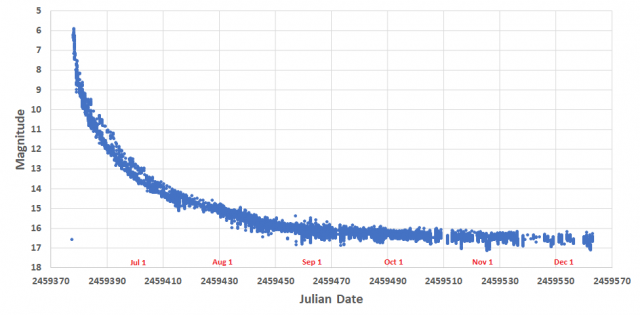
 Jeremy ShearsParticipant
Jeremy ShearsParticipantUpdated light curve until end 2021. Currently 18th mag, but still ~4 mags above quiescence
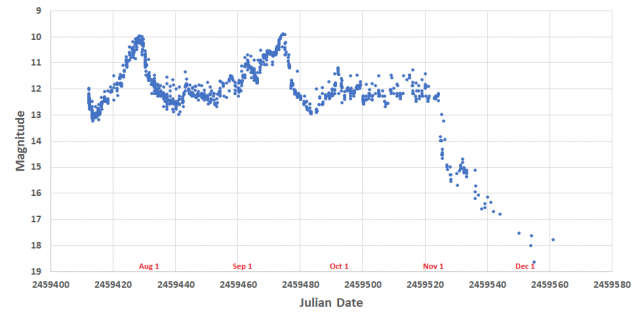
 Jeremy ShearsParticipant
Jeremy ShearsParticipantUpdated light curve until end 2021. Currently 10th mag and still worth following
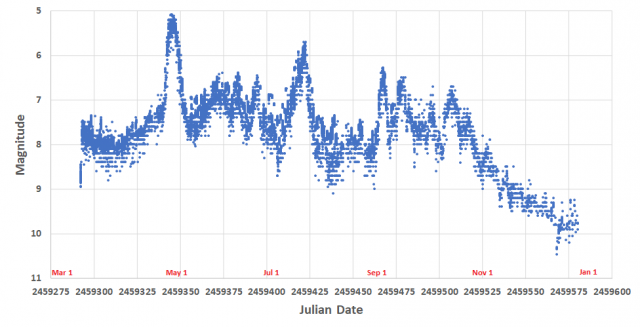
 Jeremy ShearsParticipant
Jeremy ShearsParticipantUpdated light curve until end 2021. Currently ca mag 15.5, some 4.5 mags above quiescence and worth following
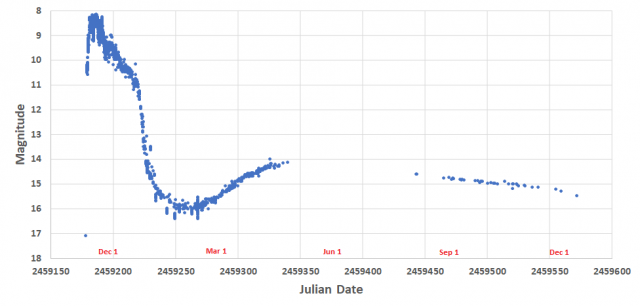
 Jeremy ShearsParticipant
Jeremy ShearsParticipantUpdated light curve until end 2021. This nova is still at mag 17 and worth following
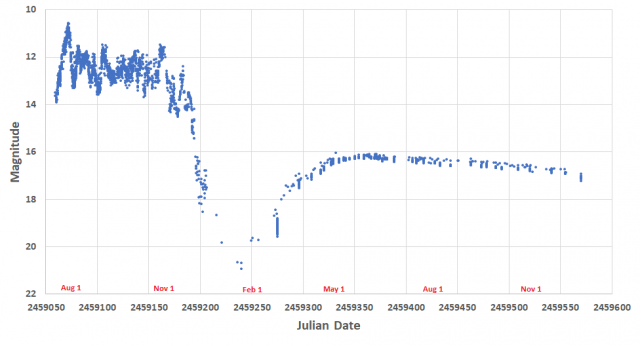
 Jeremy ShearsParticipant
Jeremy ShearsParticipantHere is the complete light curve of V1405 Cas from its discovery on March 18 until today. What a fascinating nova! And it’s still worth following
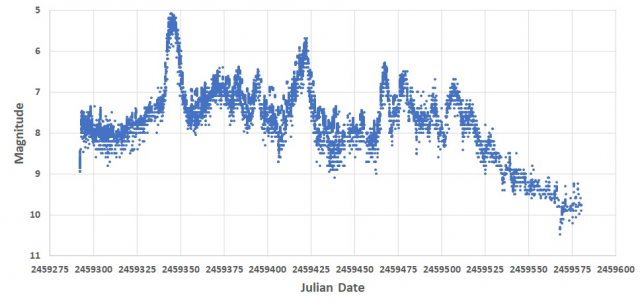
 Jeremy ShearsParticipant
Jeremy ShearsParticipantIt looks like this UGWZ system is on the turn: mag 14.4 last night Dec 19 (CV; Gary Poyner)
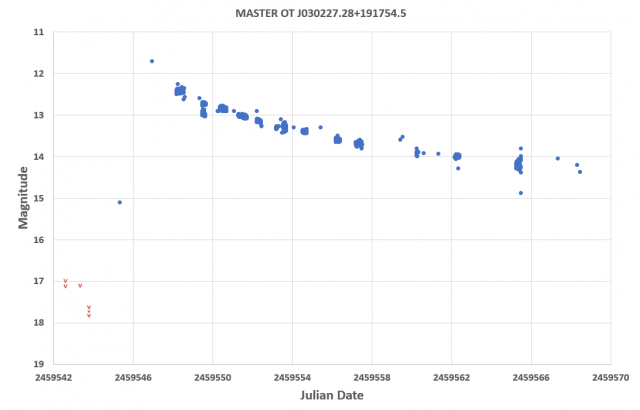
-
AuthorPosts

